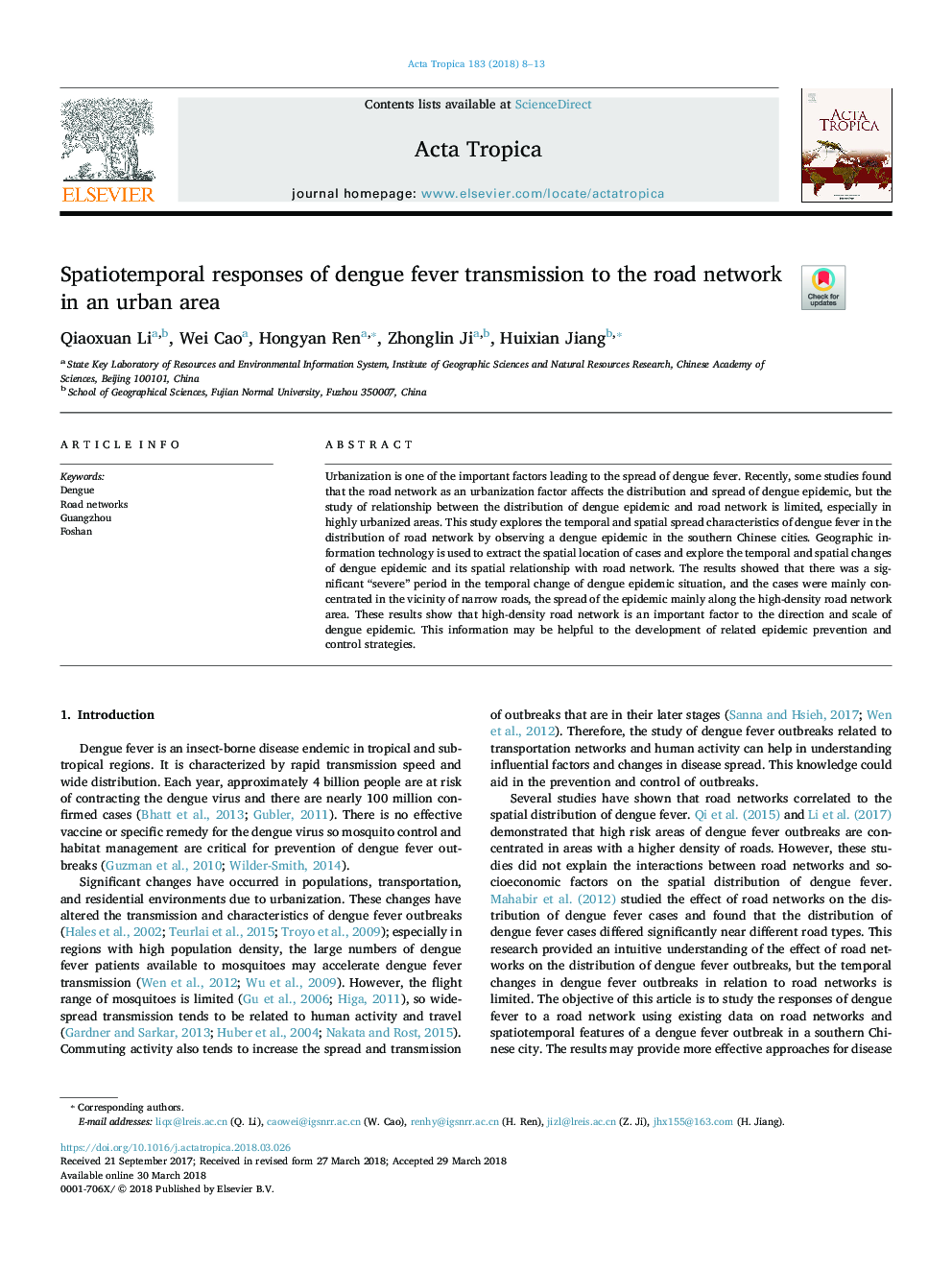| Article ID | Journal | Published Year | Pages | File Type |
|---|---|---|---|---|
| 8744242 | Acta Tropica | 2018 | 6 Pages |
Abstract
Urbanization is one of the important factors leading to the spread of dengue fever. Recently, some studies found that the road network as an urbanization factor affects the distribution and spread of dengue epidemic, but the study of relationship between the distribution of dengue epidemic and road network is limited, especially in highly urbanized areas. This study explores the temporal and spatial spread characteristics of dengue fever in the distribution of road network by observing a dengue epidemic in the southern Chinese cities. Geographic information technology is used to extract the spatial location of cases and explore the temporal and spatial changes of dengue epidemic and its spatial relationship with road network. The results showed that there was a significant “severe” period in the temporal change of dengue epidemic situation, and the cases were mainly concentrated in the vicinity of narrow roads, the spread of the epidemic mainly along the high-density road network area. These results show that high-density road network is an important factor to the direction and scale of dengue epidemic. This information may be helpful to the development of related epidemic prevention and control strategies.
Keywords
Related Topics
Life Sciences
Immunology and Microbiology
Parasitology
Authors
Qiaoxuan Li, Wei Cao, Hongyan Ren, Zhonglin Ji, Huixian Jiang,
